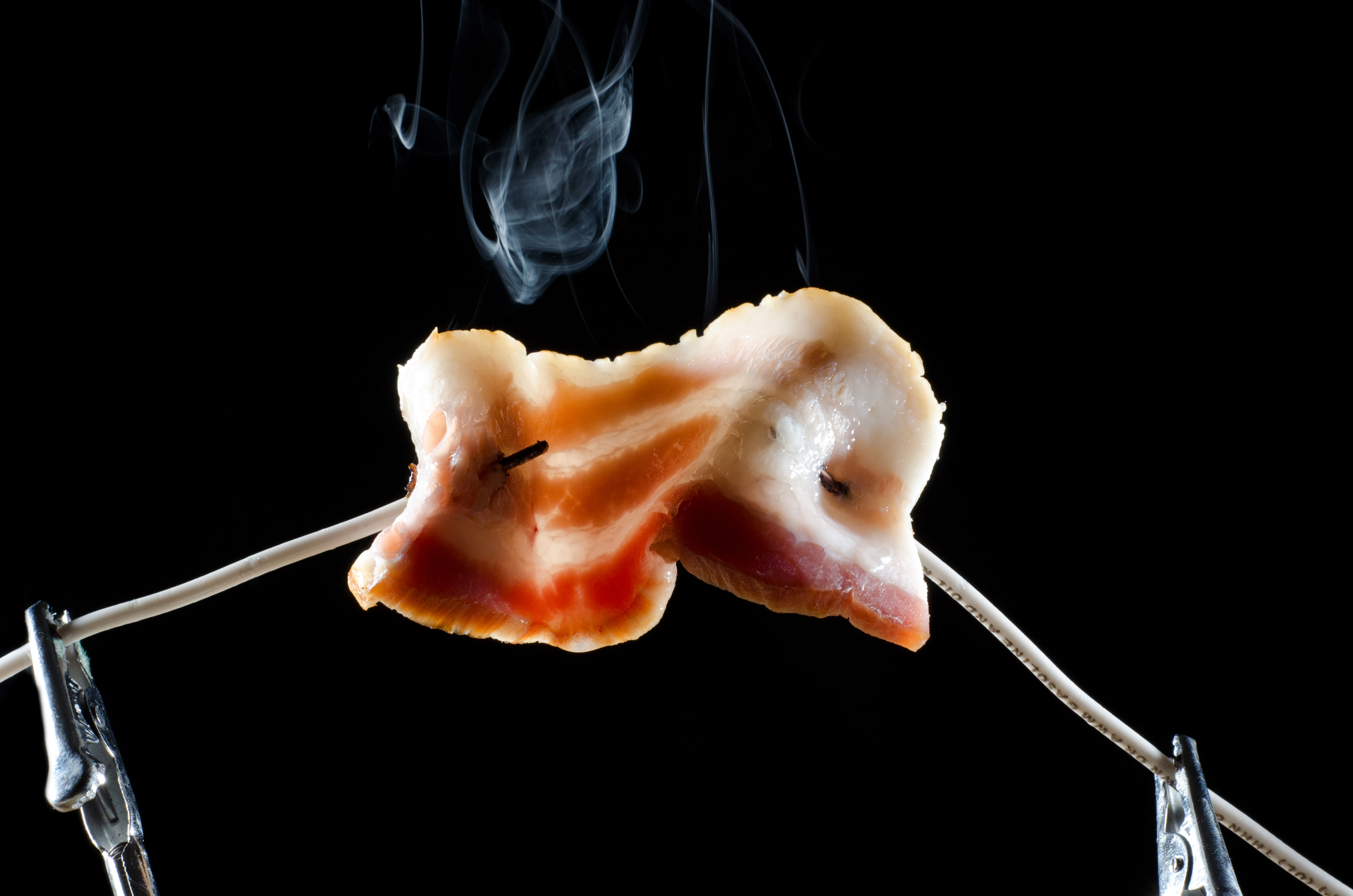
Sous-vide cooking is a method that’s been around since the 70’s, but has just recently gained popularity in the mainstream. In practical terms, it means putting your protein in a plastic bag and cooking it in warm water for longer than normal. The benefit to sous-vide, particularly in this recipe, is that it keeps the structure of your proteins intact – our fish won’t toughen up or fall apart during cooking.
I’m using a chile verde salt from SaltWorks, a gourmet salt company based in Woodinville, Washington. I’ve recently been in a major salt bender and SaltWorks and Secret Stash Sea Salts have been my pushers. You’ll see more on that next week. Flavored salts like these are an excellent way to add flavor without adding additional work.
Makes: sous-per duper dinner for two
Total kitchen time: 30 minutes
Shopping list:
- 3/4 – 1lb halibut fillet, skin removed
- 1 tsp. chile verde salt
- 1/2 tsp. freshly ground white pepper
- 1 tsp. olive oil
- 2 sprigs rosemary
- 1 1-gallon zip-top plastic bag
- 1/2 can Kerns Guava Nectar
- Pat the halibut fillet dry and coat all sides with the chile verde salt, white pepper and olive oil.
- Place the fillet in a zip top bag and place a sprig of rosemary (if using) on the top and bottom of the fillet. If you’re lucky enough to own a vacu-seal machine, use it to suck the air out of the bag. For the rest of us (and our pseudo-sous-vide) just try to get as much air as possible out of the bag.
- Fill a large stockpot with warm water over medium-low heat. You’ll want to bring the water to 132°F, but not much hotter. If you paid attention in chemistry class, you’ll know that the water won’t be close to boiling at this temperature.
- Submerge the bottom of the bag in the water, leaving the top above the water line so as not to introduce any accidental leakage. Cook until the halibut feels slightly firm, about 6-8 minutes. You can test the doneness by gently flexing the fillet in the bag. If it flakes easily, it’s done.
- Meanwhile, heat the 1/2 can of guava nectar in a small saucepan over high heat. Boil to reduce the liquid to about 2 tablespoons.
- Remove the fillet from the bag and divide into two servings, discarding the rosemary. Pour the reduced guava glaze over each fillet and serve.
This turned out to be a super easy and excellent dinner. The saltiness and slight kick of the chile verde was an excellent compliment to the sweetness of the guava. My original intent was to bruleé the guava glaze for a crispy exterior, but alas my torch was nowhere to be found. If you’re feeling adventurous, won’t you light this dish on fire and tell me how it turns out?
Update: Jean-François at SousVideCooking.org has an excellent table of cooking times and temperatures for fish, along with other great sous-vide tips. I’ve adjusted this recipe accordingly, since I didn’t have my stopwatch out the first time through. Thanks, Jean-François!

140°C and 20 minutes sounds to me a bit too hot and too long. I invite you to see more data about cooking time and temperature for cooking sous vide fish and especially Halibut on this link http://www.sousvidecooking.org/sous-vide-cookery-and-recipes-time-and-accurate-temperature-while-cooking-fish-sous-vide/
Jean-François
Great post, thanks for your sharing.
is very wonderful and delicious, you’re great!!!
I’d like to exchange friendlink with your blog~~,ok?
please reply to me via mail if you wish ~ ^_^
ps..my blog is very very wonderful! ye~340
Thanks for some new ideas for Sous Vide experimentation! You should check out my blog post on Sous Vide a while back. http://cookingblog.partiesthatcook.com/2010/10/07/sous-vide-cooking-is-back-and-better-than-ever-salmon-recipe/
528298 514666I came across this great from you out of sheer luck and never believe lucky enough to say also credit you for any job nicely done. 796640
Pingback: MUI7GLkEnc MUI7GLkEnc